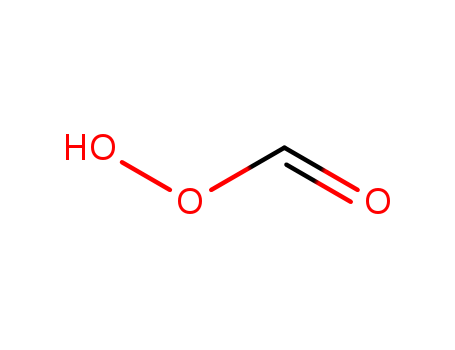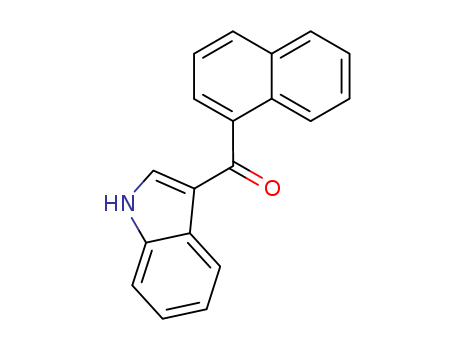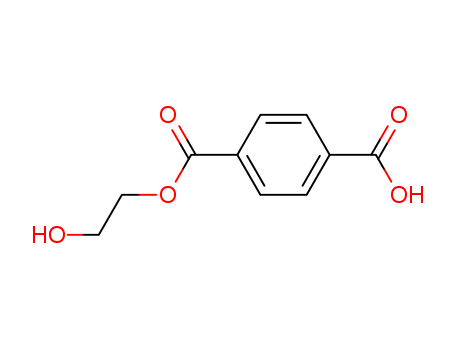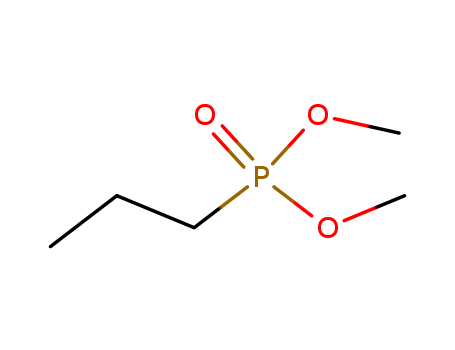- Product Details
Keywords
- Top quality Vanillin
- Vanillin 121-33-5
- Vanillinon hot sale
Quick Details
- ProName: Top quality Vanillin 121-33-5 Vanillin...
- CasNo: 121-33-5
- Molecular Formula: C8H8O3
- Appearance: Powder
- Application: 121-33-5
- DeliveryTime: depend on yr quantity
- PackAge: Aluminium Foil Bag and Paper Drum
- Port: shanghai
- ProductionCapacity: 1 Metric Ton/Month
- Purity: 99.5%
- Storage: 1MT
- Transportation: By Sea/Air/DHL
- LimitNum: 1 Kilogram
- Grade: Industrial Grade
Superiority
Top quality Vanillin 121-33-5 Vanillinon hot sale
[English Name]
3-METHOXY-4-HYDROXYBENZALDEHYDE
4-HYDROXY-3-METHOXYBENZALDEHYDE
AKOS BBS-00003189
AURORA 4274
FEMA 3107
LABOTEST-BB LT00429580
METHOXYPROTOCATECHUIC ALDEHYDE
METHYL PROTOCATECHUIC ALDEHYDE
OTAVA-BB BB0109160039
VANILLA
VANILLIC ALDEHYDE
VANILLIN
VANILLINE
VANILLINUM
2-Methoxy-4-formylphenol
3-Methoxy-4-hydroxybenzaldehyde (vanillin)
4-Formyl-2-methoxyphenol
4-hydroxy-3-methoxy-benzaldehyd
4-hydroxy-3-methoxybenzaldehyde (vanillin)
4-Hydroxy-5-methoxybenzaldehyde
[EINECS No.] 204-465-2
[Molecular formula] C8H8O3
MFCD00006942 [MDL no.
[Molecular weight] 152.15
[MOL file] 121-33-5.mol
Food additives: Food flavor (sweetening agent) : natural equivalent flavor and artificial flavor
Food additives: food spices
[Appearance] White or creamy white acicular crystal, with vanilla bean aroma and strong milky aroma.
[solubility] 1g the product was soluble in 100ml water, 16ml80℃ hot water and 20ml glycerin. Soluble in alcohols, chloroform, ether, carbon disulfide, glacial acetic acid and pyridine, soluble in oil and alkali hydroxide solutions, which are acidic to liturium. Slow oxidation in wet air exposure. Sweet.
Melting point 81-83 °C(lit.)
[Boiling point] 170 ° C15mm Hg(LIT.)
[Density] 1.06
[Vapor density] 5.3 (vs Air)
[vapor pressure] > 0.01mm Hg (25 °C)
【 FEMA 】 3107
[Flash point] 147 °C
Solubility 】 Methanol: 0.1g /mL, clear
[Water solubility] 10 g/L (25 C)
【 Sensitive 】Air & Light Sensitive
Merck 】 【 14993 2
[Detection method] HPLC
【 BRN 】 472792
[Precautions for storage] Light sensitivity; Humidity sensitive; Air sensitive
[Precautions for storage] Air is sensitive; Humidity sensitive; Nitrogen protection; Light sensitive
Details
The preparation methods
[Method 1]
Derived from vanilla bean.
It is produced by the hydrolysis of o-aminophenyl methyl ether into guaiacol in the presence of nitro dimethylaniline and catalyst, condensation with formaldehyde, or reaction with trichloromethane catalyzed by potassium hydroxide, and then by extraction separation, vacuum distillation and crystallization purification. It can also be made from wood pulp waste liquid, eugenol, guaiacol, safrol, etc.
[Method 2]
Lignin as raw material
Vanillin can be prepared by using the lignin contained in the waste solution of sulfurous acid pulping from paper mills. General waste liquid contains 10% ~ 12% solids, of which 40% ~ 50% is calcium lignosulfonate. First, the waste liquid was concentrated to 40% ~ 50% solid content, then 25% NaOH of lignin content was added, and heated to 160 ~ 175℃(about 1.1 ~ 1.2mpa). After 2h air oxidation, the conversion rate was generally up to 8% ~ 11% of lignin. Vanillin was extracted from benzene and benzene was recovered by steam distillation. Add sodium bisulfite in the oxide to form bisulfite, and then separate it from impurities, then decompose vanillin with sulfuric acid, and finally get the finished product by vacuum distillation and recrystallization.
Guaiacol as raw material
Trichloroacetaldehyde The guaiacol and trichloroacetaldehyde were heated to 27℃ in the presence of soda or potassium carbonate and condensed to form 3-methoxy - 4-hydroxyphenyl trichloromethyl methanol. The unreacted guaiacol was removed by steam distillation. In the presence of caustic soda, nitrobenzene was used as oxidant and heated to 150℃ to get vanillin. Cu-cuo-cocl2 can also be used as a catalyst for air oxidation at 100℃. After the reaction, vanillin is extracted with benzene and the finished product is purified by vacuum distillation and recrystallization.
In the acetalic acid method, guaiacol, sodium hydroxide solution and sodium carbonate were successively added into the acetalic acid solution, and condensed at 30 ~ 33℃ to produce 3-methoxy - 4-hydroxyphenylhydroxyacetic acid. After extracting the unreacted guaiacol with solvent, adding sodium hydroxide solution, heating to 100℃ in the presence of nitrobenzenesulfonic acid and calcium hydroxide, the vanillin was decomposed by oxidation. After neutralization, the oxidized product was extracted by vanillin with dichloroethane. The crude product was purified by vacuum distillation and recrystallization. Add 166kg of 30% hydrochloric acid and 200kg of water into the reactor by nitroso method. After cooling to l0℃, drop 61.5kg of dimethylaniline within 2h with the temperature not exceeding 25%, and then continue stirring for 20min. After cooling to 6℃, 75kg sodium nitrite was added into 25% aqueous solution. The temperature was controlled at 7~10℃ and stirred for 1h. P-nitrodimethylaniline hydrochloride was filtered out and then added with a certain amount of ethanol and concentrated hydrochloric acid to dilute the solid to obtain p-nitrodimethylaniline.
Condensation of guaiacol with p-nitroso dimethylaniline: 26kg of ullotroxol was dissolved in 34kg of water, then a mixture of 126kg of guaiacol and 63kg of ethanol was added and stored in a high tank for standby use. 550kg of the mixture of p-nitrodimethylaniline hydrochloride and ethanol was added to the reaction kettle, heated to 28℃, then metal salt catalyst was added, and then the mixture of guaiacol was added when heated to 35 ~ 36℃ (3 ~ 3.5h), the temperature was maintained at 40 ~ 43℃, and the reaction was continued to stir for 1h after the drip was finished. Then add 100kg of 40℃ water for dilution and stir for 15min. The content of vanillin in the condensation solution should be above 11%.
Using benzene as solvent, the condensation solution was extracted by continuous countercurrent in a rotating plate-type liquid-liquid extraction tower. Benzene extract contains a large amount of hydrochloric acid, wash with water first, then neutralize with alkali until Ph=4; Benzene was recovered by distillation with a rising film evaporator and then steamed with steam for 1h to remove the residual benzene. Finally, the crude vanillin was rapidly steamed at 120 ~ 150℃(666.6Pa) and the freezing point was about 70℃. The crude product was dissolved in toluene at 70℃, filtered and cooled to 18 ~ 20℃, then filtrated and washed with a small amount of toluene to obtain vanillin. Following a second vacuum distillation, the fractions were collected at 130 ~ 140℃(266.6 ~ 399.9Pa) and dissolved in dilute ethanol at 60~70℃. The fractions were slowly cooled to 16 ~ 18℃ to crystallize (1h). Strain in a centrifuge and wash with a little dilute ethanol. Finally, the finished product was dried by the hot gas flow at 50 ~ 60℃ for 12 hours. According to guaiacol, the yield can reach over 65%.
P-hydroxybenzaldehyde method
Vanillin was prepared from p-hydroxybenzaldehyde by monobromination and methoxidation. Add 16g(0.131mo1) p-hydroxybenzaldehyde and 90mL solvent into a 250mL flask, drop 6.8ml (0.131mo1) liquid bromine after dissolution, heat to 40-45 ℃ for 6h reaction. The solvent was extracted with decompressed pressure, the residue was boiled with water, and filtered while it was hot. The filtrate was cooled and crystallized, filtered, and dried to white crystal 3-bromo-4-hydroxy-benzaldehyde. The melting point was 123 ~ 124℃, and the yield was 90%.
12g(0.0597 Mo1) of the above products, 45mL(0.230 Mo1) of sodium methanol-28.24% solution, 35mLDMF and 0.2gcucL were added into a 250mL flask and reacted at 115℃ for 1.5h. Then extraction solvent, residues with 18% hydrochloric acid acidification to Ph=4 ~ 5, and then with hot benzene extraction 3 times, to remove water layer, benzene layer decompression distillation to remove benzene, coffee liquid. It was dissolved in hot dilute alcohol solution, cooled into white crystals, filtered and dried to produce vanillin 8.3g, melting point 81-82 ℃, purity 99.5%, yield 91.1%.
[Method 3]
N, N-dimethylaniline was acidified into salt by hydrochloric acid and nitrified into p-nitroso-n, N-dimethylaniline hydrochloride by sodium nitrite. It was condensed with guaiacol and formaldehyde at 41-43℃. And then you extract it with benzene. The first distillation, recrystallization with benzene, the second distillation, recrystallization with water. The finished product is dried at 50℃. In sulfite pulp waste liquid, lignin sulfonate containing betulinol structure unit was oxidized under alkaline condition and then hydrolyzed to obtain vanillin. Raw material consumption (kg/ T) guaiacol (98%) 1460 sodium nitrite 640N, N-dimethylaniline (98%) 974 hydrochloric acid (30%) 6000 formaldehyde (99%) 320
Upstream and downstream product information
[Upstream Raw Materials]
Sodium hydroxide -- -- -- -- > > hydrochloric acid sulfuric acid > sodium carbonate - > > phenol - chloroform > N, N - dimethyl aniline - > methenamine - > calcium hydroxide - > chloral -- -- -- -- > > N - methyl aniline adjacent -- > methoxy aniline sulfonic acid > glyoxylate -- - > guaiacol -- -- > clove phenol > benzene sulfonic acid -- -- > lignin sulfonic acid calcium > safrole -- -- -- -- > > alkaline lignin xylidine (isomer mixtures) -- - > flat Ye Xiang GuoLan (VANILLA PLANIFOLIA) fruit -- -- > lignin sulfonate > methyl methanol
[Downstream products]
Isoamyl alcohol > butyric acid -- - > 2 - methoxy - 4 - (2 - amino ethyl) phenol - > 4, 5 - dimethoxy - 3 - iodine benzaldehyde - > cocobolo element -- -- -- -- > > curcumin hellebore aldehyde > adjacent vanillin -- - > benzaldehyde three, four, five, three oxygen radicals - - > 4-3 - methoxy - benzyl oxygen radicals benzaldehyde > capsaicin -- - > extraordinary fragrance LanSu > card don't dopamine -- - > methyldopa - > 1, 4-trichlorobenzene benzene third oxygen radicals -- -- > against bacteria net -- - > 2 - (3, 4 - dihydroxy phenyl) ethylamine - > 2 - methoxy - 4 - (2 - nitro ethylene) phenol - > 2, 3 - dimethyl oxygen Base benzaldehyde -- -- -- -- > > lemon grass oil bian Ye Xiang GuoLan (VANILLA PLANIFOLIA) fruit - > 2, 3 - two br - 4 - hydroxy - 5 - methoxy benzene formaldehyde - > trans ferulic acid > vanillin amine hydrochloride -- - > 5 - bromine vanillin - > 3, 4 - dihydroxy benzoic acid - > 4 - (2 - amino ethyl) - 2 - methoxy phenol - > - > 5 - hydroxy citronella propionate vanillin - > formic acid ester





 Assessedsupplier
Assessedsupplier










